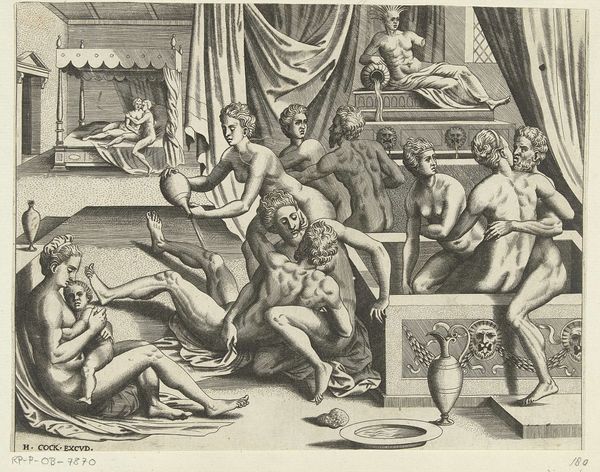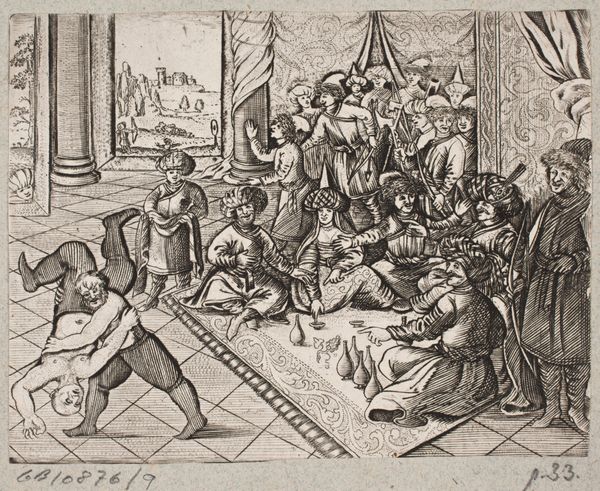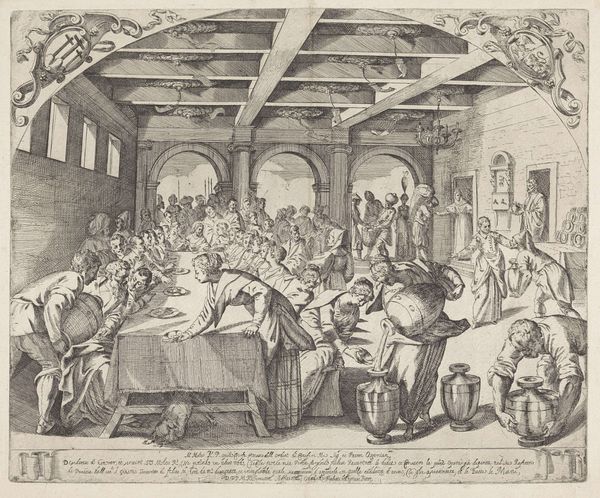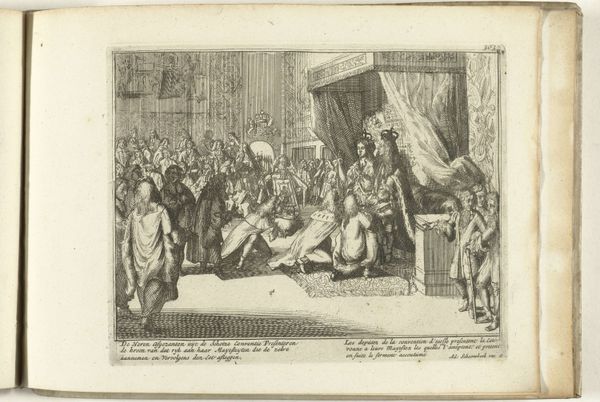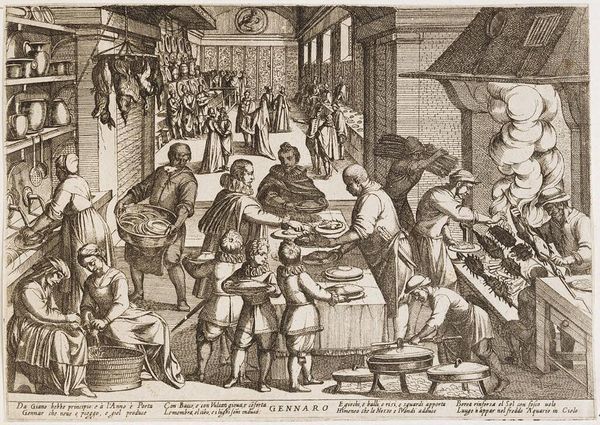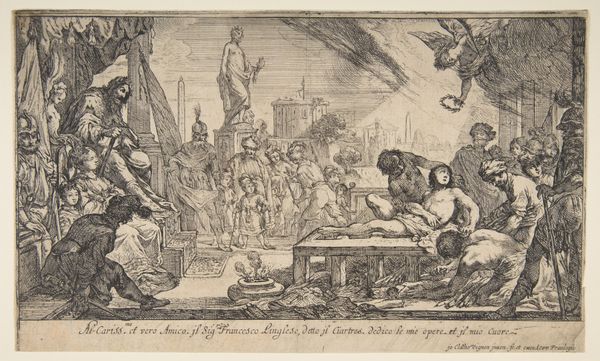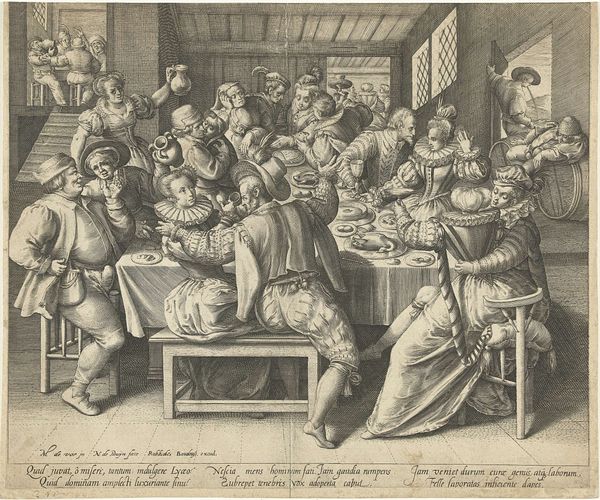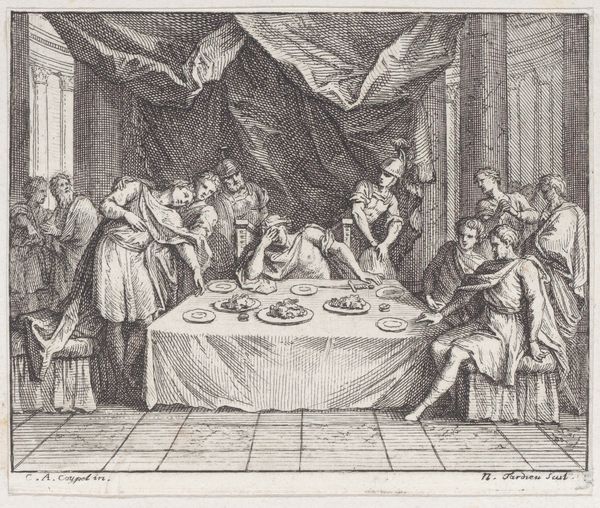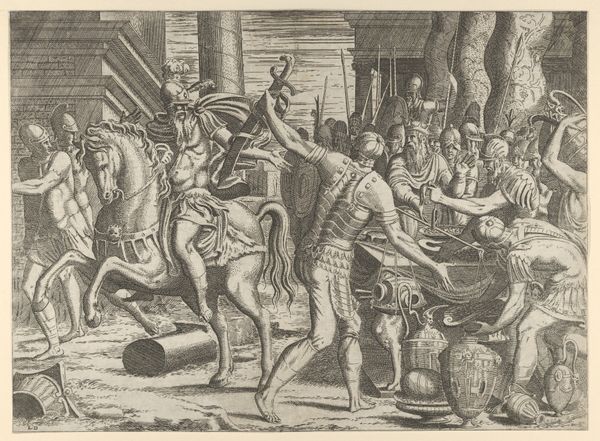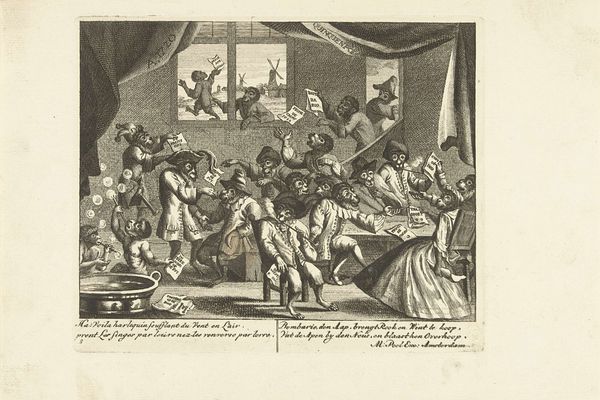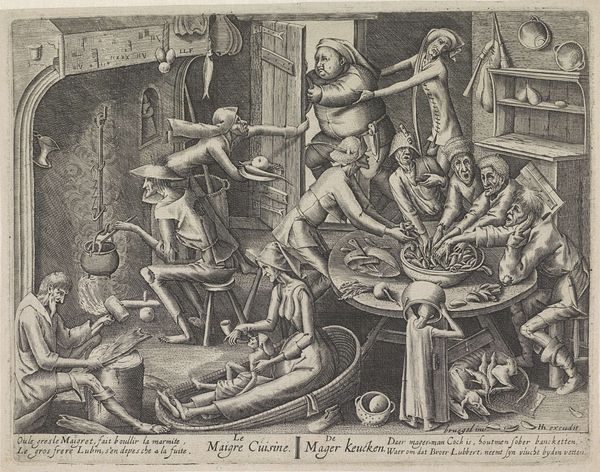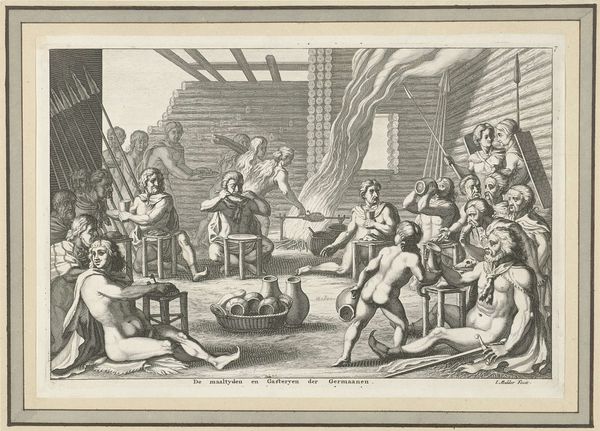
engraving
#
narrative-art
#
baroque
#
old engraving style
#
figuration
#
history-painting
#
northern-renaissance
#
engraving
Dimensions: height 287 mm, width 333 mm
Copyright: Rijks Museum: Open Domain
Editor: Here we have "Lazarus bedelt in het huis van de rijke man," or "Lazarus Begging at the House of the Rich Man," an engraving made before 1637 by Crispijn van de Passe the Younger, currently housed at the Rijksmuseum. It is amazing how much detail an artist can achieve through engraving. What strikes me is the sharp contrast it sets up between these two very different worlds, rich and poor. What do you see here? Curator: The piece hums with the weight of inequality. But it’s not just about poverty, it’s a spotlight on indifference. Notice how the rich feast, seemingly oblivious to Lazarus at the door. Their fine clothes, the overflowing table – it’s all a stage set, isn’t it? The composition, in its own stark way, reminds me of a moral play. Van de Passe stages Lazarus not just as a beggar but as a condemnation of unchecked wealth. Editor: Absolutely. So, do you think van de Passe’s personal beliefs come into play here? Curator: Indubitably! I believe we can infer some measure of dissent or societal commentary. It’s not a detached observation, you see. The care given to the engraving of Lazarus's emaciated form, compared to the almost cartoonish rendering of the banqueters… it speaks volumes, wouldn’t you agree? He makes you *feel* something, doesn't he? Editor: I completely agree. The contrast definitely evokes a sense of unease. Curator: It’s an echo of our own time, isn't it? That’s why art, even from centuries ago, still kicks us in the shins sometimes. It is timeless, I am deeply moved every time I witness its capacity. Editor: True, that feeling of "plus ça change" definitely lingers. Curator: Exactly! A good reminder that looking back can help us see forward. I enjoyed this deep dive; thank you.
Comments
No comments
Be the first to comment and join the conversation on the ultimate creative platform.
